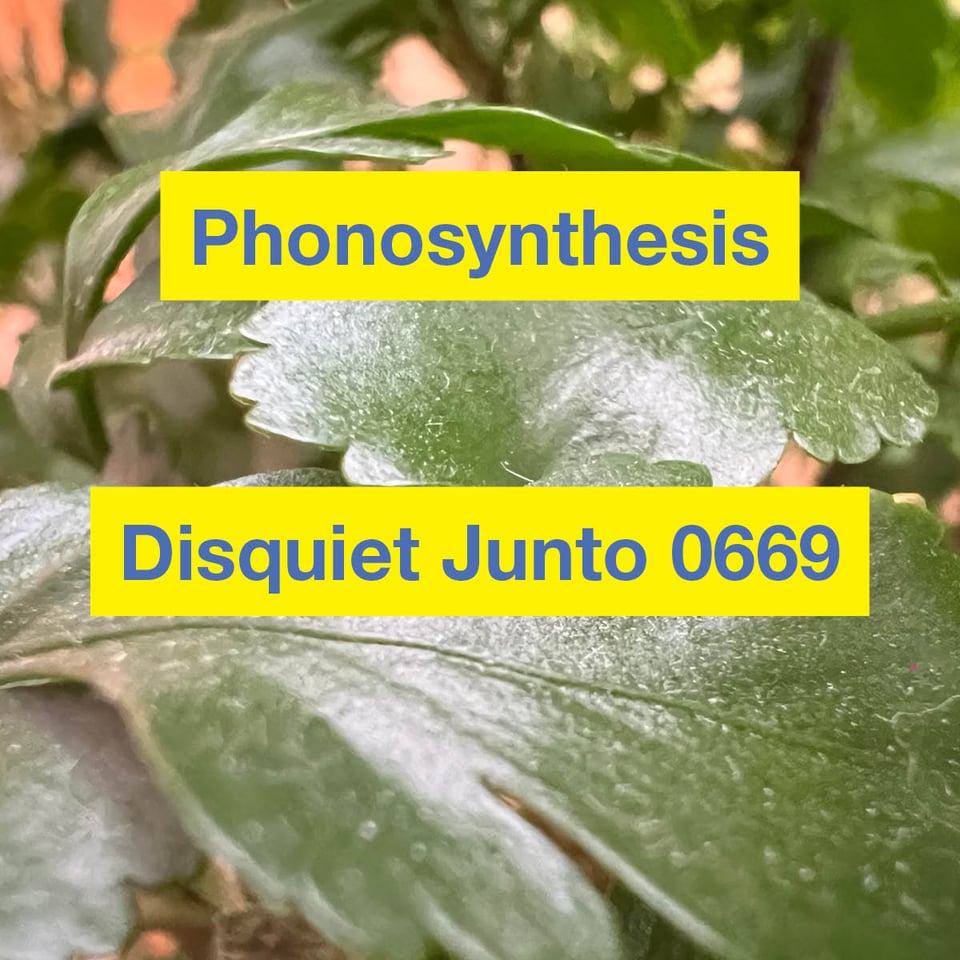Disquiet Junto Project 0669: Phonosynthesis

Dear Members of the Disquiet Junto,
Every week, when I send out this project, I don’t actually send it out directly. I set it up in various digital publishing tools, primarily my disquiet.com and an email list service, and then I set them both on timers. I am almost always deep asleep when they actually go out, shortly after midnight. I do all this knowing that some of the first Junto members to see each week’s project instructions are in Australia, and in fact it’s not uncommon for an Australian track to pop up on the llllllll.co discussion thread before I wake up. (I’m looking at you, Bassling.) So it seems particularly appropriate that this week’s project has as its basis the research of four scientists from an Australian University. I first became aware of it as part of the process of putting together my This Week in Sound email newsletter.
And thanks, everyone, for all the great sounds this past week — and for keeping your secrets.
And thanks, as always, for your generosity with your time, creativity, and curiosity.
Best from San Francisco,
Marc Weidenbaum
marc@disquiet.com
. . .
Disquiet Junto Project 0669: Phonosynthesis
The Assignment: Make music to help a forest regenerate.
A scientific research paper this month documented evidence that sound can help fungus grow. The conclusion: “Demonstrating a tangible impact on fungal activity, our findings suggest that carefully tuned acoustic parameters might be able to enhance ecological processes.”
Record music to help a forest grow. Imagine an array of solar-powered speakers is spread through a forest-in-need. Or come up with another deployment scenario of your own imagining. What sort of music would you play for the forest to encourage its regeneration?
The research paper: https://royalsocietypublishing.org/doi/10.1098/rsbl.2024.0295.
Coverage in the New York Times: https://www.nytimes.com/2024/10/04/science/fungus-sounds-growth.html
The paper is the work of four people from the College of Science and Engineering, Flinders University, in Australia.
Thanks to Michael Rhode for having shared with me the research coverage.
Tasks Upon Completion:
Label: Include “disquiet0669” (no spaces/quotes) in the name of your track.
Upload: Post your track to a public account (SoundCloud preferred but by no means required). It’s best to focus on one track, but if you post more than one, clarify which is the “main” rendition.
Share: Post your track and a description/explanation at https://llllllll.co/t/disquiet-junto-project-0669-phonosynthesis/
Discuss: Listen to and comment on the other tracks.
Additional Details:
Length: The length is up to you. How hard do you need to work to keep your secret?
Deadline: Monday, October 28, 2024, 11:59pm (that is: just before midnight) wherever you are.
About: https://disquiet.com/junto/
Newsletter: https://juntoletter.disquiet.com/
License: It’s preferred (but not required) to set your track as downloadable and allowing for attributed remixing (i.e., an attribution Creative Commons license).
Please Include When Posting Your Track:
More on the 669th weekly Disquiet Junto project, Phonosynthesis — The Assignment: Make music to help a forest regenerate — at https://disquiet.com/0669/